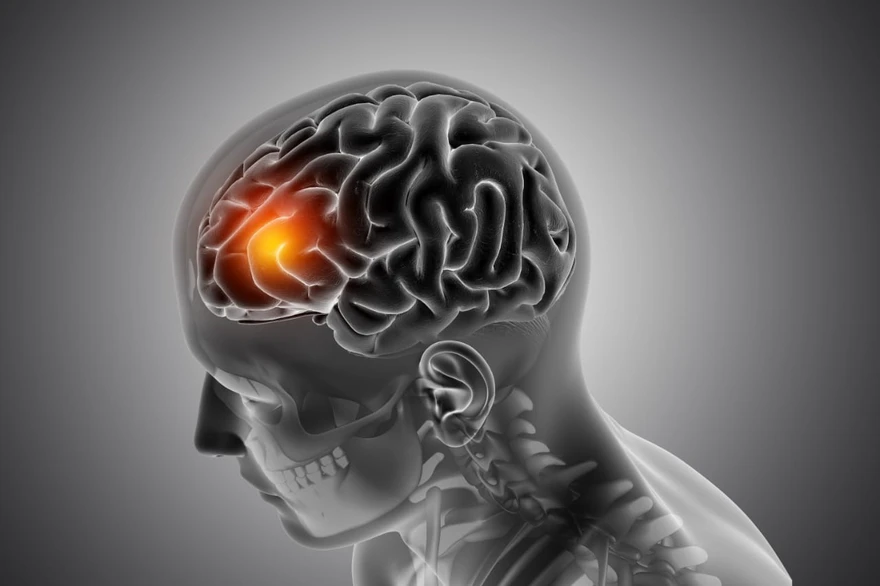Preventive Healthcare
Understanding Brain Aneurysm: Symptoms Causes, and Treatment

Table of Contents
- What is a brain aneurysm?
- What happens when a brain aneurysm ruptures?
- Who do brain aneurysms affect?
- How common are brain aneurysms?
- What are the symptoms of a brain aneurysm?
- Symptoms of an unruptured brain aneurysm
- What causes brain aneurysms?
- What causes a brain aneurysm to rupture?
- How are brain aneurysms diagnosed?
- How are brain aneurysms treated?
- How can I reduce my risk of developing an Aneurysm?
- What is the outlook for a ruptured brain aneurysm?
- Can you live a long life with a brain aneurysm?
- Conclusion
What is a brain aneurysm?
A brain aneurysm, sometimes referred to as a cerebral aneurysm, is a blister-like swelling in a weakened section of an artery in or around the brain. Because of this continuous pressure, blood flow pushes the weakened area outward, creating a bump. As blood flows into this bulge, the aneurysm stretches further, just like a balloon filled with air.
Brain aneurysms can form anywhere in the brain, but are most commonly found in the major arteries at the base of the skull. Surprisingly, about 10% to 30% of the people who are diagnosed with a brain aneurysm have multiple aneurysms. However, most of the brain aneurysms are small and usually do not cause symptoms unless they are ruptured or applied pressure on nearby nerves or brain tissue.
What happens when a brain aneurysm ruptures?
When a brain aneurysm ruptures occurs, blood spills into the surrounding brain tissue, leading to an increased pressure and swelling in the brain. This scenario typically triggers severe headache, often described as thunderclap headache along with other symptoms.
A ruptured brain aneurysm can cause severe health problems such as bleeding between the brain and the thin tissues covering it (subarachnoid hemorrhage), seizures, coma and even death. Unfortunately, about 25% of ruptured brain aneurysm cases result in death.
Who do brain aneurysms affect?
Brain aneurysms can occur in anyone at any age. However, they are most likely to affect individuals between 30 and 60 years of age. It is more common in women than men.
How common are brain aneurysms?
Brain aneurysms are relatively common in India, with an estimated prevalence of about 2-3% of the population. Although many brain aneurysms remains undiagnosed and asymptomatic, the risk of rupture can lead to serious health complications. Awareness and early detection are crucial for effective management of this condition.
What are the symptoms of a brain aneurysm?
Brain aneurysm symptoms can vary depending on whether it is ruptured or not.
A ruptured aneurysm usually triggers symptoms such as:
- 'Thunderclap' Headaches
- Nausea and Vomiting
- Stiff Neck
- Blurred or Double Vision
- Sensitivity to Light (Photophobia)
- Seizures
- Drooping Eyelid and a Dilated Pupil
- Pain above and behind your eye
- Confusion
- Weakness and/or numbness
- Loss of Consciousness
Symptoms of an unruptured brain aneurysm
Most unruptured brain aneurysms don't cause symptoms. If they do, it is usually because of the swollen artery which is exerting pressure on the nearby nerves or brain tissue.
These type of brain aneurysm symptoms can include:
- Headaches
- Vision Changes
- Enlarged (Dilated) Pupil
- Numbness or Tingling on your head or face
- Pain above and behind your eye
- Seizures
If you experience these brain aneurysm symptoms, it is important to see a healthcare provider as soon as possible.
What causes brain aneurysms?
Brain aneurysms occurs when the walls of an artery in your brain become thin and weak due to several factors, including certain inherited conditions that affect arterial health and lifestyle habits such as smoking and excessive alcohol consumption. Uncontrolled high blood pressure is also a significant risk factor for brain aneurysm causes.
What causes a brain aneurysm to rupture?
The same factors that contribute to the development of a brain aneurysm can also cause one to rupture it. The most common brain aneurysm cause is believed to be high blood pressure, due to increased pressure against the walls of the vessels.
How are brain aneurysms diagnosed?
Diagnosing a brain aneurysm involves a combination of imaging techniques and clinical evaluation. Initially, a health care provider may perform a neurological exam to check for signs of a brain aneurysm, such as vision changes, speech difficulties, or motor weakness.
If an aneurysm is suspected, the following diagnostic tests are commonly used:
- Computer Tomography (CT) Scan: CT Scan provide detailed images of the brain and can quickly identify bleeding caused by ruptured brain aneurysm. Sometimes CT Angiography (CTA), which involves injecting contrast dye into the bloodstream to see blood vessels more clearly.
- Magnetic resonance imaging (MRI): MRI provides high-resolution images of the brain structure that can detect aneurysms. Magnetic resonance angiography (MRA) can further highlight blood vessels and reveal the presence and size of an aneurysm.
- Cerebral Angiography: This is an invasive procedure in which a catheter is passed into the brain through an artery and a contrast dye is injected. It provides detailed images of blood vessels and is considered the gold standard for diagnosing brain aneurysms.
- Lumbar Puncture (Spinal Tap): If a ruptured brain aneurysm is suspected but is not visible on imaging, a lumbar puncture may be suggested to detect the presence of blood in the cerebrospinal fluid, indicating a subarachnoid hemorrhage.
Early detection through these diagnostic methods is crucial for effective management and treatment, potentially preventing severe brain aneurysm complications.
How are brain aneurysms treated?
Brain aneurysm treatment involves surgical and non-surgical methods.
- Brain aneurysm surgeries include clipping, in which a clip is inserted to stop blood flow to the aneurysm, and endovascular coiling, in which coils are inserted to cause clotting.
- Non-surgical treatments involve managing risk factors, such as controlling blood pressure and quitting smoking.
In cases of ruptured aneurysms, immediate medical intervention is required. The choice of treatment depends on the aneurysm size, location, and overall health. Early diagnosis and treatment are crucial to prevent complications.
How can I reduce my risk of developing an Aneurysm?
While you can't change some risk factors for brain aneurysm, such as age or genetic conditions, you can take some steps to reduce your risk of developing a brain aneurysm. These include maintaining healthy blood pressure levels through lifestyle changes and medications, quitting smoking, and avoiding excessive alcohol consumption.
What is the outlook for a ruptured brain aneurysm?
The prognosis of a ruptured brain aneurysm depends on a variety of factors, such as patient's age and overall health, the size and location of brain aneurysm and how quickly the condition is treated. Unfortunately approx. 25 % of people who experienced a brain aneurysm rupture die within24 hours. Of those who survive, about two-thirds suffer permanent brain damage.
Can you live a long life with a brain aneurysm?
Yes! If diagnosed early and with proper brain aneurysm treatment, one can indeed live a long life with a brain aneurysm.
Conclusion
Brain aneurysms are undoubtedly serious conditions that require a prompt medical intervention. However, understanding the causes and symptoms can help you act quickly if you suspect that you or a loved one one. Regular health checks can also be helpful in diagnosing unruptured brain aneurysms early.
Here at Metropolis Healthcare, we provide reliable pathology testing and health check-up services that can help detect conditions like brain aneurysms at early stages. Our skilled technicians can perform at-home blood sample collection for convenience. Our commitment to accurate results coupled with our patient-centric approach ensures that prioritizing your health has never been easier.

























